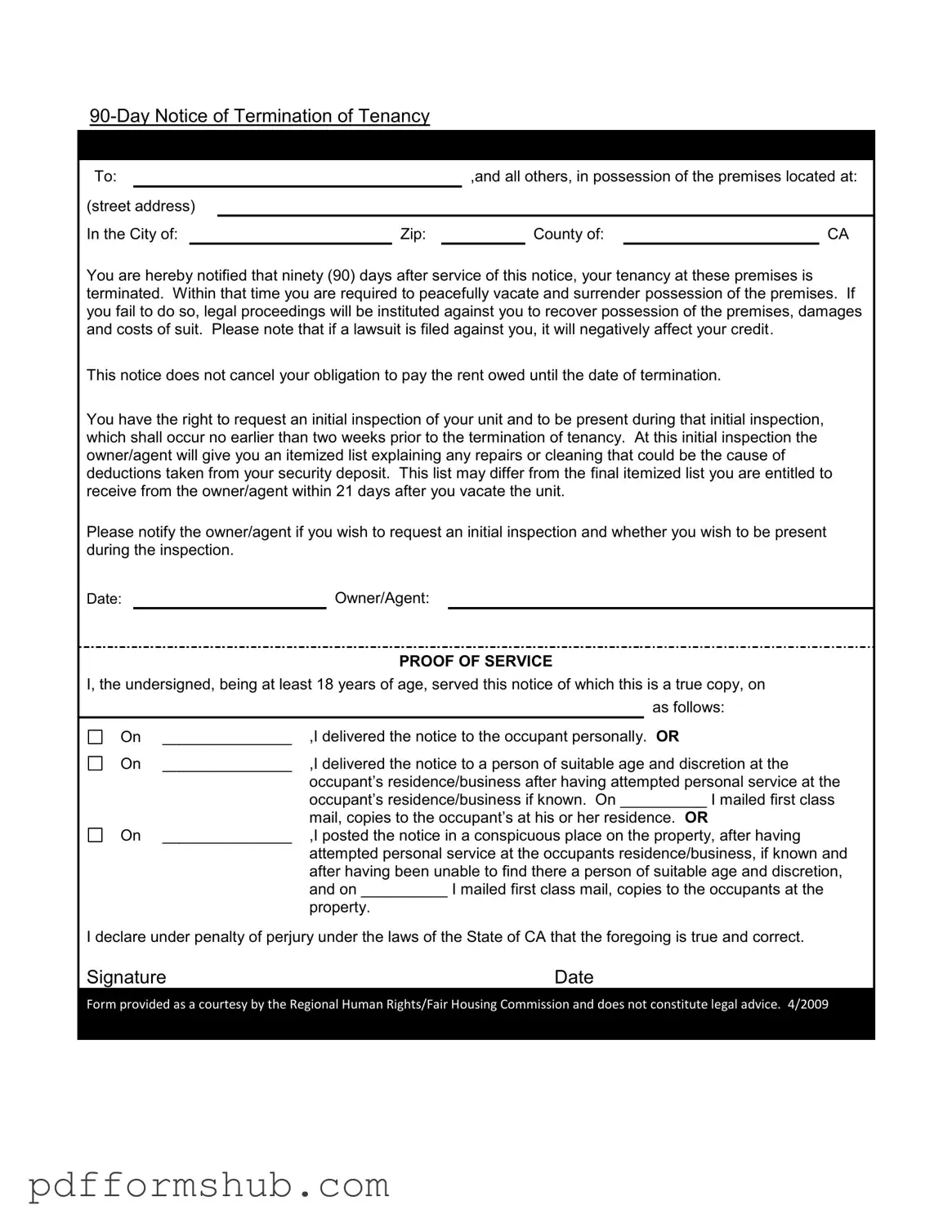Fill in Your 90 Day Notice To Move Out Form
The 90-Day Notice to Move Out is an official document that informs tenants they must vacate their rental property within ninety days. This notice outlines the requirements for moving out, including the necessity to peacefully surrender possession of the premises. Understanding this form is crucial for both tenants and landlords to ensure a smooth transition.
If you need to fill out the 90-Day Notice to Move Out form, please click the button below.
Customize Form
